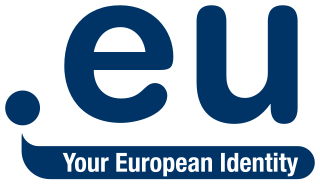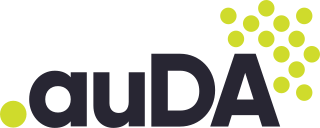The Domain Name System (DNS) is the hierarchical and decentralized naming system used to identify computers reachable through the Internet or other Internet Protocol (IP) networks. The resource records contained in the DNS associate domain names with other forms of information. These are most commonly used to map human-friendly domain names to the numerical IP addresses computers need to locate services and devices using the underlying network protocols, but have been extended over time to perform many other functions as well. The Domain Name System has been an essential component of the functionality of the Internet since 1985.
A name server refers to the server component of the Domain Name System (DNS), one of the two principal namespaces of the Internet. The most important function of DNS servers is the translation (resolution) of human-memorable domain names (example.com) and hostnames into the corresponding numeric Internet Protocol (IP) addresses (93.184.216.34), the second principal name space of the Internet, which is used to identify and locate computer systems and resources on the Internet.
A domain name is a string that identifies a realm of administrative autonomy, authority or control within the Internet. Domain names are used in various networking contexts and for application-specific naming and addressing purposes. In general, a domain name identifies a network domain or an Internet Protocol (IP) resource, such as a personal computer used to access the Internet, or a server computer. Domain names are often used to identify services provided through the Internet, such as websites and email services. As of 2017, 330.6 million domain names had been registered.
Dynamic DNS (DDNS) is a method of automatically updating a name server in the Domain Name System (DNS), often in real time, with the active DDNS configuration of its configured hostnames, addresses or other information.
NetBIOS is an acronym for Network Basic Input/Output System. It provides services related to the session layer of the OSI model allowing applications on separate computers to communicate over a local area network. As strictly an API, NetBIOS is not a networking protocol. Older operating systems ran NetBIOS over IEEE 802.2 and IPX/SPX using the NetBIOS Frames (NBF) and NetBIOS over IPX/SPX (NBX) protocols, respectively. In modern networks, NetBIOS normally runs over TCP/IP via the NetBIOS over TCP/IP (NBT) protocol. This results in each computer in the network having both an IP address and a NetBIOS name corresponding to a host name. NetBIOS is also used for identifying system names in TCP/IP (Windows). Simply saying, it is a protocol that allows communication of files and printers through the Session Layer of the OSI Model in a LAN.
The domain name .com is a top-level domain (TLD) in the Domain Name System (DNS) of the Internet. Added in 1985, its name is derived from the word commercial, indicating its original intended purpose for domains registered by commercial organizations. Later, the domain opened for general purposes.

.eu is the country code top-level domain (ccTLD) for the European Union (EU). Launched on 7 December 2005, the domain is available for any person, company or organization based in the European Union. This was extended to the European Economic Area in 2014, after the regulation was incorporated into the EEA Agreement, and hence is also available for any person, company or organization based in Iceland, Liechtenstein and Norway. The TLD is administered by EURid, a consortium originally consisting of the national ccTLD registry operators of Belgium, Sweden, and Italy, joined later by the national registry operator of the Czech Republic. Trademark owners were able to submit registrations through a sunrise period, in an effort to prevent cybersquatting. Full registration started on 7 April 2006.
A domain name registrar is a company that manages the reservation of Internet domain names. A domain name registrar must be accredited by a generic top-level domain (gTLD) registry or a country code top-level domain (ccTLD) registry. A registrar operates in accordance with the guidelines of the designated domain name registries.
Domain name speculation is the practice of identifying and registering or acquiring Internet domain names as an investment with the intent of selling them later for a profit.

.au is the Internet country code top-level domain (ccTLD) for Australia. It was first created on 5 March 1986. Domain name policy is managed by .au Domain Administration (auDA). As of July 2018, the registry is operated by Afilias.
The Uniform Domain-Name Dispute-Resolution Policy (UDRP) is a process established by the Internet Corporation for Assigned Names and Numbers (ICANN) for the resolution of disputes regarding the registration of internet domain names. The UDRP currently applies to all generic top level domains, some country code top-level domains, and to all new generic top-level domains.

The secondary market, also called the aftermarket and follow on public offering, is the financial market in which previously issued financial instruments such as stock, bonds, options, and futures are bought and sold. The initial sale of the security is the primary market, and all sales after the initial sale are sales in the secondary market. Whereas the term primary market refers to the market for new issues of securities, and "[a] market is primary if the proceeds of sales go to the issuer of the securities sold," the secondary market in contrast is the market created by the later trading of such securities.

.ly is the Internet country code top-level domain (ccTLD) for Libya. .ly is also the file name extension of the LilyPond format.

An exhaust system is used to guide reaction exhaust gases away from a controlled combustion inside an engine or stove. The entire system conveys burnt gases from the engine and includes one or more exhaust pipes. Depending on the overall system design, the exhaust gas may flow through one or more of:

Hella KGaA Hueck & Co. is an internationally operating German automotive part supplier with headquarters in Lippstadt, North Rhine-Westphalia. The company develops and manufactures lighting, electronic components, and systems for the automotive industry. It also has one of the largest trade organizations for automotive parts, accessories, diagnosis, and services within Europe.

A domain name auction facilitates the buying and selling of currently registered domain names, enabling individuals to purchase a previously registered domain that suits their needs from an owner wishing to sell. A Drop registrar offers sales of expiring domains; but with a domain auction there is no need to wait until a current owner allows the registration to lapse before purchasing the domain you most want to own. Domain auction sites allow users to search multiple domain names that are listed for sale by owner, and to place bids on the names they want to purchase. As in any auction, the highest bidder wins. The more desirable a domain name, the higher the winning bid, and auction sites often provide links to escrow agents to facilitate the safe transfer of funds and domain properties between the auctioning parties.
Domain drop catching, also known as domain sniping, is the practice of registering a domain name once registration has lapsed, immediately after expiry.

A trademark is a type of intellectual property consisting of a recognizable sign, design, or expression that identifies products or services from a particular source and distinguishes them from others. The trademark owner can be an individual, business organization, or any legal entity. A trademark may be located on a package, a label, a voucher, or on the product itself. Trademarks used to identify services are sometimes called service marks.

.at is the Internet country code top-level domain (ccTLD) for Austria. It is administered by nic.at.
Domain registration is the process of acquiring a domain name from a domain name registrar.








